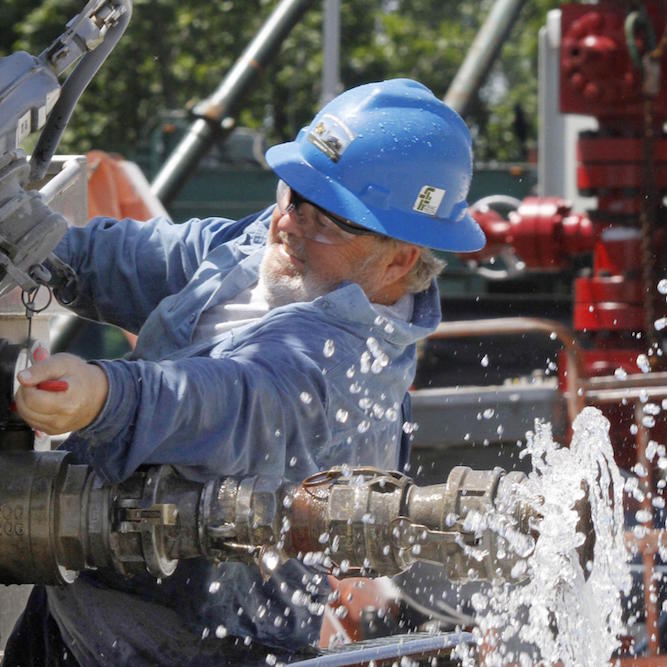That’s just fracked: Semi overturns, spills fracking wastewater into reservoir

In the same week news broke that Ohio injected well over a billion gallons of fracking wastewater into its soil in 2015, the toxic fluid is rearing its ugly head yet again.
A semi truck hauling thousands of gallons of drilling wastewater, which contains sand and harmful chemicals, overturned in eastern Ohio, spilling approximately 5,000 gallons of the stuff into a nearby field, which then flowed into a creek and a reservoir.
For now the reservoir is closed while Environmental Protection Agency officials are analyzing the extent of the contamination.
[su_button url=”http://www.dispatch.com/content/stories/local/2016/03/09/Fracking-wastewater-shuts-down-reservoir.html” target=”blank” background=”#e50403″ color=”#ffffff” size=”6″ icon_color=”#ffffff” text_shadow=”0px 0px 0px #ffffff”]Read More[/su_button]
3/7/2016: Ohio takes in 1.2 billion gallons of fracking wastewater in 2015
In 2015 Ohio took in 4 million more barrels of fracking wastewater, bringing the total number to a whopping 29 million barrels of wastewater. Each barrel equals 42 gallons, meaning 1.2 billion gallons of wastewater was injected into Ohio soil in 2015 alone.
Fracking is a process by which a mixture of highly pressurized water and sand is shot into underground rock, allowing oil and natural gas to seep through. The water is rendered highly toxic by the process, and it must be disposed of by being injected in “waste wells” deep into the earth.
Ohio disposes of waste water not only from in-state fracking sites, but also from surrounding states that don’t allow construction of waste wells. Only 55 percent of wastewater injected into Ohio waste wells came from Ohio, according to the Columbus Dispatch.
[su_button url=”http://www.dispatch.com/content/stories/local/2016/03/07/injections-of-wastewater-rise-in-ohio-despite-lull-in-fracking.html” target=”blank” background=”#e50403″ color=”#ffffff” size=”6″ icon_color=”#ffffff” text_shadow=”0px 0px 0px #ffffff”]Read More[/su_button]
2/8/2016: Frackers use millions more gallons of water in 2015
From 2014 to 2015, oil and gas prospectors increased water usage by 36 million gallons, resulting from an increase in the number of fracking sites and an increase in water used per site.
That means that in one year, just the increase in water used from 2014-2015 could be used to fill 54 Olympic-sized swimming pools.
Strangely enough, The Ohio Department of Natural Resources shows the same increase in water used per well, but a net decrease of water used overall, according to the Columbus Dispatch. The agency could not explain the discrepancy.
The process of fracking involves shooting a mixture of highly pressurized water and sand underground to fracture underground rock, allowing natural gas and oil to seep through more easily.
A main concern for environmentalists is that water is rendered highly toxic through the fracking process, and is effectively removed from the water cycle once it is used.
“Ohio has more water than some of the more arid states out West, but we need to be preserving and protecting that and not using it frivolously,” said Teresa Mills, program director for the Buckeye Forest Council.
[su_button url=”http://www.dispatch.com/content/stories/local/2016/02/07/drillers-using-more-water-to-frack-ohio-shale.html” target=”blank” background=”#e50403″ color=”#ffffff” size=”6″ icon_color=”#ffffff” text_shadow=”0px 0px 0px #ffffff”]Read More[/su_button]
BROUGHT TO YOU BY



